Different Bird Types & Their Traits

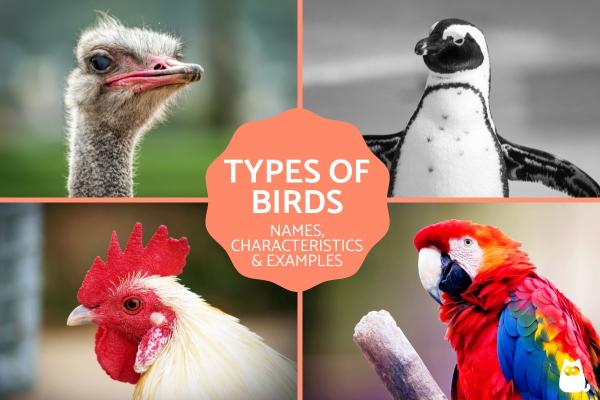
Birds are a class of warm-blooded vertebrates with distinguishing features including feathers, wings, and beaks. They are renowned for their remarkable diversity, encompassing over 10,000 known species. This diversity is evident in their size, shape, coloration, behavior, and preferred habitats. However, with such a vast number of species, a system is needed to organize and classify them.
The following AnimalWised article explores the various types of birds, their classification, and their primary characteristics.
Bird characteristics
In the scientific community, birds are classified as theropod dinosaurs, the only lineage within the dinosaur group known to have survived extinction. Their origin can be traced back millions of years to these bipedal, meat-eating dinosaurs.
Paleontological evidence, including fossilized remains, reveals a strong link between birds and theropods. Shared characteristics such as hollow bones for efficient flight and certain skeletal structures support this evolutionary connection.
Therefore, from a biological standpoint, birds are not a completely separate class of animals, but rather the sole surviving descendants of a particular dinosaur lineage. Over vast stretches of time, these ancestors developed unique adaptations, enabling them to take flight and diversify into the over 9,000 bird species gracing the planet today. Let us take a closer look at these specific adaptations:
- Feathers: these lightweight marvels provide insulation, waterproofing, and most importantly, the ability to fly. The structure of feathers allows for different wing shapes depending on the bird's flight style, from the high-maneuvering wings of a hummingbird to the long, soaring wings of an albatross.
- Hollow bones: many bird bones are lightweight and air-filled, reducing overall body weight and making flight more efficient. This is crucial since heavier creatures require more energy to stay aloft.
- Beaks: unlike dinosaurs with teeth, birds have beaks adapted for various diets. From the powerful crushing beaks of parrots to the long, probing beaks of waders, these specialized tools allow birds to exploit a wide range of food sources.
- Air sacs: bird lungs are connected to a network of air sacs that extend throughout their body. This unique respiratory system allows for a more efficient flow of oxygen throughout the body, vital for the high energy demands of flight.
- Keen eyesight: birds possess exceptional vision, with some species having incredible zooming capabilities or the ability to see ultraviolet light. This sharp vision aids in tasks like hunting, navigation, and predator avoidance.
- Lightweight skeleton: bird skeletons are constructed from lightweight bone and have fused bones for added strength. This reduces weight while maintaining a strong framework for flight and movement.
- Specialized feet: just like beaks, a bird's feet come in all shapes and sizes, each perfectly suited to their lifestyle. Wading birds have long toes to distribute weight on soft surfaces, raptors have sharp talons for grasping prey, and owls have a reversible outer toe for better balance when climbing.
- Superb hearing: certain birds, like owls, have exceptional hearing thanks to facial features that act like satellite dishes, pinpointing even the faintest sounds of prey.
- Salt glands: seabirds have special glands near their eyes that help them expel excess salt they ingest from seawater.
- Temperature regulation: since feathers can trap heat, some birds like vultures have opted for featherless heads to dissipate heat in hot environments.
- Colorful plumage: while some birds have excellent camouflage, others utilize vibrant feathers for attracting mates, displaying dominance, or even scaring predators.
- Unique vocalizations: Birds have an impressive range of vocalizations, from the melodic songs of songbirds to the harsh calls of raptors. These sounds are used for communication, attracting mates, and defending territory.
To delve deeper into the fascinating origins of birds and their prehistoric transformation, check out this other article.
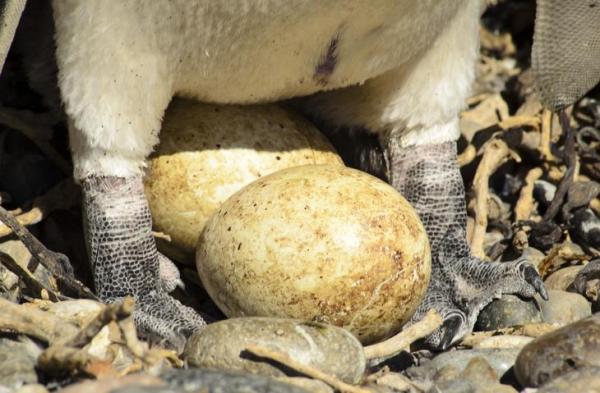
Types of birds
Birds, like all living creatures, are classified within a hierarchical system called taxonomy, where organisms are grouped based on shared characteristics. Here's the breakdown for birds:
- Kingdom: Animalia (all animals)
- Phylum: Chordata (animals with a backbone)
- Class: Aves (all birds, extinct and living)
Within the Class Aves, birds are categorized into subgroups based on closer similarities. With over 10,000 species worldwide, their diversification occurred over millions of years, notably during the Cretaceous period approximately 145 million years ago. These birds are primarily grouped into two main lineages:
- Palaeognathae: This group includes flightless birds like ostriches and emus, along with the flight-capable tinamous. This group comprises about 50 species, primarily found in the southern hemisphere. Examples include ostriches, emus, and kiwis.
- Neognathae: This incredibly diverse group encompasses all other living birds, from eagles to penguins to hummingbirds.
Dive deeper into the fascinating world of bird nests. This other article explores the different types birds build and the materials they use.
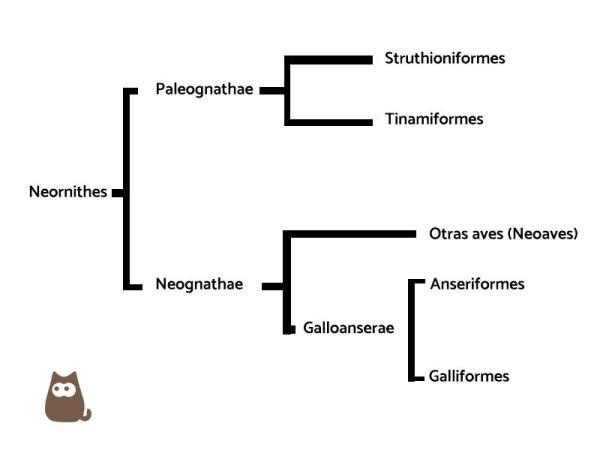
Palaeognathae birds
Palaeognathae, also known as paleognaths, are a group of birds encompassing flightless birds and the flight-capable tinamous. Their name comes from the ancient Greek words "palaios" meaning "old" and "gnathos" meaning "jaw," referencing their unique jaw structure which is considered more primitive than other birds.
Flightless birds, also referred to as ratites, encompass a variety of species, such as:
- Ostrich (Struthio camelus): the ostrich is the largest living bird species and is renowned for its exceptional speed as a runner. It inhabits various regions in sub-Saharan Africa.
- Rheas (Rhea Americana): species like Rhea Americana are smaller compared to ostriches but are adept runners. They have lost the ability to fly and are native to South America.
- Cassowaries (Casuarius casuarius): cassowaries reside in Australia and New Guinea.
- Emus (Dromaius novaehollandiae): emus are native to Australia. Both species are flightless and primarily move by walking or running.
- Kiwis (Apteryx owenii): kiwis are unique birds endemic to New Zealand. They are small, possess a distinctive round body shape, and predominantly inhabit terrestrial environments.
These flightless birds share key adaptations for ground dwelling. They lack a keel, a structure for flight muscles, and have flattened wings unfit for flying. Their bodies are built for running, with strong legs and muscles that make them exceptional sprinters.
The only flying members of the Palaeognathae are the tinamous.
Tinamous stand out as an anomaly within the Palaeognathae group. While flightless ratites like ostriches and emus are commonly associated with this lineage, tinamous possess the ability to fly, albeit in short bursts.
This intriguing contrast highlights the complex evolutionary history of these birds. Despite their flight capability, tinamous share similar jaw structures and are believed to have originated from a common ancestor with ratites within the Palaeognathae group.
Want to dig deeper into the world of flightless birds? Check out this next article.
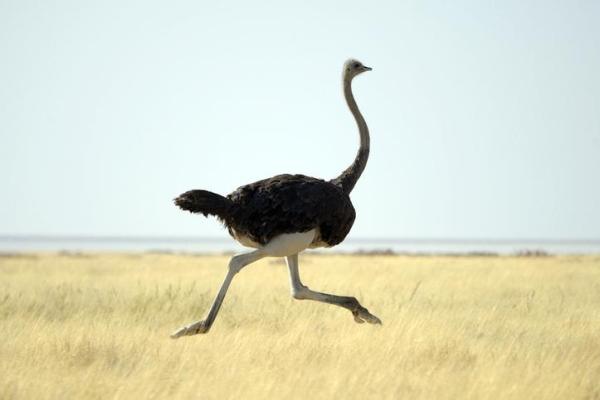
Neognathae birds
Neognathae are the vast majority of living birds, encompassing nearly 10,000 species. They represent the "new jaw" group compared to the Palaeognathae birds.
This is a tremendously diverse group, containing birds of all shapes and sizes. However, some general features that unite all Neognathae birds are:
- Fused bones in the wrist (carpus) for a stronger wing structure.
- A specific arrangement of three toes (one pointing backwards).
- Typically 13 or fewer vertebrae.
Unlike the flightless ratites and the single flying tinamou in the Palaeognathae group, most Neognathae birds can fly (exceptions include penguins and ostriches). Additionally, their jaw structures differ.
Neognathae birds are further divided into Orders, each containing birds with more specific shared characteristics. There are around 40 to 50 orders within the Neognathae sub-class. Here are some prominent examples:
- Perching birds (Passeriformes): this is the largest and most diverse order, accounting for over half of all bird species. It includes songbirds like robins, finches, sparrows, and crows, renowned for their complex vocalizations.
- Birds of prey (Falconiformes): these birds are specialized hunters with keen eyesight and sharp talons. This order encompasses eagles, hawks, falcons, and owls, each with adaptations suited to their specific hunting strategies.
- Waterfowl (Anseriformes): ducks, geese, swans, and pelicans belong to this order. They are typically adapted for aquatic environments with webbed feet for swimming and waterproof feathers.
- Parrots (Psittaciformes): this vibrant group includes macaws, cockatoos, parakeets, and more. Parrots are known for their intelligence, colorful plumage, and ability to mimic sounds.
- Shorebirds (Charadriiformes): this order encompasses sandpipers, plovers, gulls, terns, and auks. These birds are often found near water and have adaptations for wading in shallow water or catching prey in flight.
- Penguins (Sphenisciformes): these flightless birds are uniquely adapted for a life at sea. Their wings have evolved into flippers for swimming, and their bodies are streamlined for underwater movement.
Did you know a bird's feet can reveal a lot about its lifestyle? Explore the fascinating world of bird feet and their unique adaptations in this other article.
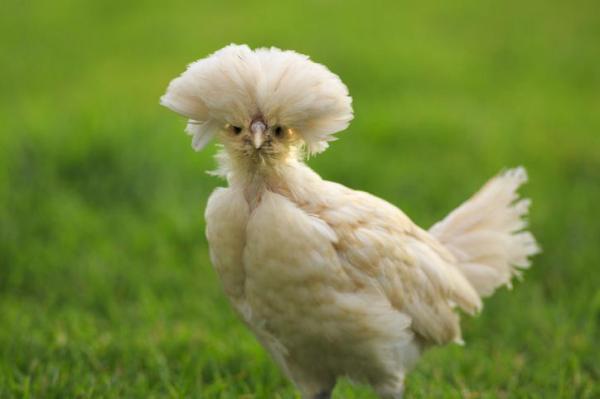
If you want to read similar articles to Different Bird Types & Their Traits, we recommend you visit our Facts about the animal kingdom category.
- Lovette, I.J. & Fitzpatrick, J.W. (2016) . Handbook Of Bird Biology . The Cornell Lab of Ornithology. Third Edition. CornellUniversity. 733 pp.
- Bierregaard, R. O. (1994). Yellow-headed Caracara . Josep del Hoyo, Andrew Elliott & Jordi Sargatal (eds.), ed. Handbook of the Birds of the World. Volume 2. New World Vultures to Guineafowl. Barcelona: Lynx Editions.
- Senar, JC & Guallar, S. (2004). Much more than feathers . Barcelona: Institute of Culture of Barcelona.









